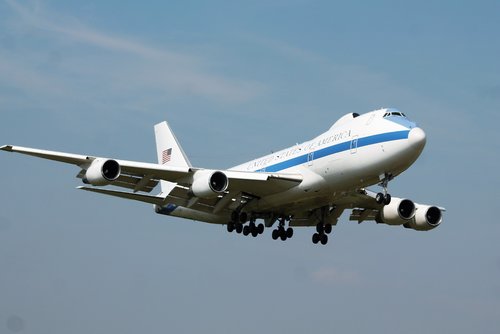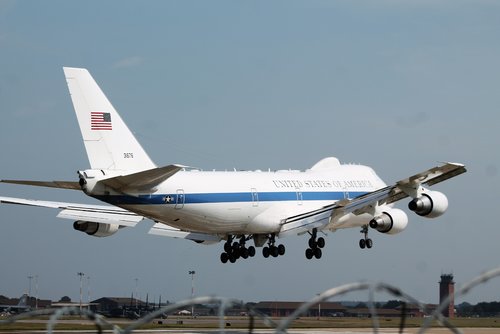The one 747 stretch proposal in the middle appears to be the same length as or perhaps slightly longer than the Boeing 747-600X later in 1996, which was around 279 feet in length.
Close, but it's hard to pin down. When you count window frames and try to equi-space them, it looks like about 22 frames (the 747-600X was 27.5 frames). However, if you just compare base length, it comes out to about 277 feet. It's hard to say how precise this is. I've seen several proposals from 1979 centered around a 6-frame forward, 8-frame aft stretch, plus the SUD.
What's interesting, though, is that this is the only proposed 747 variant I've ever seen with 6 main-deck entry doors. Even the 747-600X didn't have that.
There were some earlier proposals (circulated in the 24 July 1975 issue of
Flight International, that talked about a stretch of
50 to 70 feet to meet the anticipated needs of British Airways. I've never seen any sketchwork or schematics to accompany the latter proposal. That surely would have need six, and perhaps seven, main entry doors.
The most outlandish proposal I've ever hear was this gem, from
Flight International on 24 June 1989: "Boeing is working on a 747-400 freighter, and a possible stretched or reconfigured development that could take up to 650 passengers. The 747-400F will probably be launched this summer, to be available in late 1992/early 1993. Further ahead is a 747-500, which would have either a fuselage stretch or a double deck running the aircraft's length. Sutter says that a stretched -400 is 'a natural.'
Fuselage plugs fore and aft would add 50-100ft [emphasis added], and the aircraft would require a new 230-240ft-span wing." That would make the 747 more than 332 feet long plus however much extra length would be incurred by larger horizontal and vertical stabilizers. I think that would make it the largest jetliner ever seriously contemplated (possibly even slightly longer than MDD's HSCT, the other contender). I've never seen any illustrations of this, either.
Hesham: Do you have any text that went along with this image? It'd be helpful to see what they were saying.

















